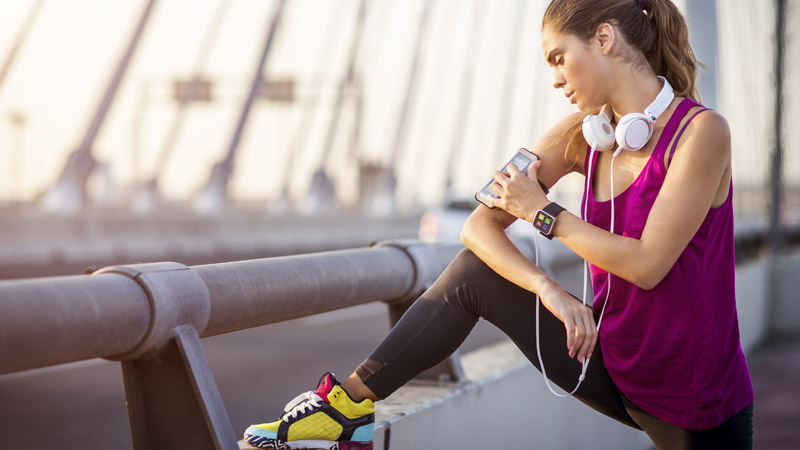Imagine this: you’re running along your usual route and think you’re pushing yourself to a new level, but you check your phone, and guess what? Your favorite fitness app just received data from your shirt — yes, your shirt — that reports otherwise. Now that’s what you call a smart garment.
Connected clothing. Before long your customers may ask about them. Many of us are familiar with ”wearables” touted by tech bloggers and health enthusiasts. The idea is to make access to data more agile by asking a product to multitask. A watch, for example, that allows you to easily surf the net while standing in line at Starbucks.
Access, however, to the body’s biometrics (heart rate, breathing, muscle effort, etc.) was missing from the equation. This data can — in real time — help prevent injury and improve performance during exercise. For example, if an athlete’s target heart rate lapses, they get a reminder to pick up the pace. What better place to extract the stats than the garments we put directly onto our bodies?
Connected clothing promises to propel wearables to revolutionary status. Still in their infancy, smart clothes are mostly affordable for elite athletes. But forward-thinking brands and innovative entrepreneurs want to bring every day fitness junkies into the fold. So what makes these clothes so intelligent? Technology, of course.
Smart clothes, including shirts, pants, bras and even socks are now embedded with special sensors. The numbers captured are synced to cell phones or devices via Bluetooth technology. Fitness apps safeguard the data for retrieval and use. Some apps even give advice such as how to exercise correctly via audio feedback sent directly to headphones. Data can then be shared with trainers and doctors, or shared on social media.
While some prototypes are racing toward broader market entry, plenty of products are becoming more palatable for broader consumption. The trick is taking the features from smart to lightweight, washable and affordable. One company built running shorts that record metrics including cadence, ground contact time, braking and stride length. Another offers heated compression pants to warm up athletes’ muscles before hitting the trails. But you don’t have to be an elite competitor to enjoy clothes that work a little harder. Many consumers already favor fabrics that feature moisture and odor control, easy care, stain release and knits that yield flexibility and ease of movement. It’s a start!
Many of our products offer features that improve the safety and comfort of the wearer, or carry features that allow for devices to be easily worn during workouts, such as:
Never let ‘em see you sweat: Moisture-wicking fabrics are in hot demand. Sport-Tek’s Tech Fleece Colorblock Full-Zip Hooded Jacket (ST245 & LST245) offers that and much more. In addition to keeping the wearer dry, this on-trend jacket boasts loops that tuck in headphones at the neck and thumbholes at the cuffs so hands stay warm.
Fashion Meets Function: OGIO is a brand perfecting the art of designing clothing that’s versatile, stylish and chock full of tech savvy. Their Express Polo (OG129) features lightweight polyester in a smooth herringbone pattern that seamlessly translates from the office to the golf course. The shirt’s side vents keep the wearer dry from tee time to sunset.
As customers browse merchandise, ask what sports or activities they’re planning to do in their garments. Then, suggest matches that work hard while they play hard.
